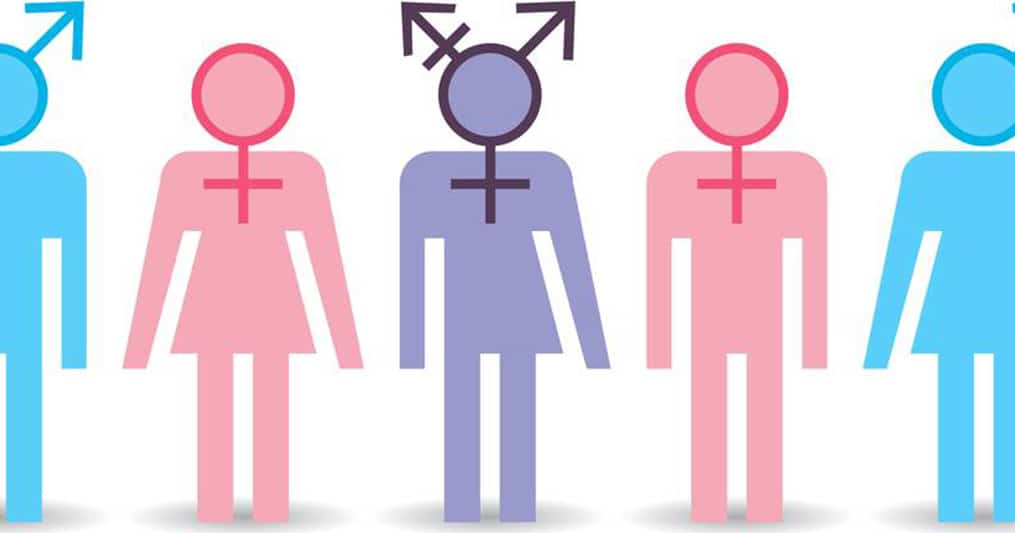What is gender and sex? What is gender dysphoria?
We tend to use gender and sex interchangeably. It is not new for people to be confused between the terms ‘gender‘ and ‘sex‘. Gender refers to the characters assigned by the society while sex belongs to the biological domain, i.e. what is assigned at birth through anatomy.
The two concepts usually go hand in hand however, there can be a possibility of conflict. When a person is dissatisfied because of a mismatch between gender identity and biological sex, the person is said to have gender dysphoria.

Who is likely to have it?
As the definition suggests, one may think that a transgender (a person whose gender identity doesn’t match with the sex at birth) must have it. But it is important to know that while some transgender people are prone to it, not all have it. Gender Dysphoria is a psychological term that leans towards distress, often so strong that may lead to depression due to the uneasiness of gender and sex mismatch. Usually, it is experienced during childhood but some may face it during puberty or later.
How is it diagnosed?
The DSM-5 provides one framework to help diagnose Gender Dysphoria with two separate sets of ideals for children and adolescents/adults. The following is a list of conditions in children.
* A desire to be of the other gender.
* In boys, a preference for cross-dressing or liking female attire. In girls, a strong preference for wearing only masculine (as considered by the society) clothing and refraining from wearing feminine clothing.

* Opting for cross-gender roles in plays or acts.
* Preferring games and toys stereotyped for the opposite gender.
* Boys could avoid masculine toys while girls could avoid female ones.
* Being comfortable with the company of the opposite gender.
* A strong dislike of one’s sexual anatomy
* A strong desire for the physical sex characteristics that match their liking.
In adolescents and adults, the following behaviour can be seen.
* Incongruence between one’s experienced/expressed gender and primary and/or secondary sex characteristics (or in young adolescents, the anticipated secondary sex characteristics).
* A desire to be rid of one’s primary and/or secondary sex because of the incongruence with one’s experienced/expressed gender (or in order just young adolescents, a desire to prevent the development of the anticipated secondary sex characteristics).
* Wanting primary and/or secondary sex characteristics of the other feel gender.
* A strong desire to be of the other gender.
* A strong desire to be treated as the other gender.
* Holding a typical set of feelings and reactions for the different genders.
These must be persistent for at least 6 months and also show clinical distress to qualify as Gender Dysphoria.

From unease to rest. How do you manage?
Just like our body uses various coping mechanisms, people with Gender Dysphoria choose different methods of affirmation to feel comfortable. These could be social affirmations, physical, etc. These are individualised. Not all transgender people would like to affirm themselves by meeting all the criteria. By seeking help from a doctor, one can get a personalised plan. Here are some options available to ease Gender Dysphoria:-
* Hormone therapy
* Surgery, such as feminizing surgery or masculinizing surgery to change the breasts or chest, external genitalia, internal genitalia, or facial features.
* Build a support network
* Feel comfortable expressing your gender identity
* Explore healthy sexuality during the transition.
* Voice and communication therapy to develop vocal characteristics matching your experienced or expressed gender.

* Hair removal or transplantation
* Genital tucking
* Breast binding or breast padding.
Gender Dysphoria has a lot of side hurdles as well. Chances of bullying at school, facing stigmas in society and other interpersonal problems increase. These challenges pose a threat to the well-being of the individual and the best way to avoid them is by being accepting and supportive.
In April 2015, Caitlyn Jenner (famous for being a part of the Kardashian family) came out as a trans-woman. Jenner is 71 now and completed the sex reassignment surgery in January 2017. Gender Dysphoria can go neglected for many years, hence becoming worse with time, straining relationships and self.

She tweeted, “I’m so happy after such a long struggle to be living my true self. Welcome to the world, Caitlyn. Can’t wait for you to get to know her/me.”
Caitlyn had immense support. In India particularly the lack of support groups, knowledge about the concept, and stereotypes make it a tough task for people to cope. We need to be more inclusive and reduce the stress of these individuals instead of adding more to it.
Also Checkout: How India Treats AIDS
















